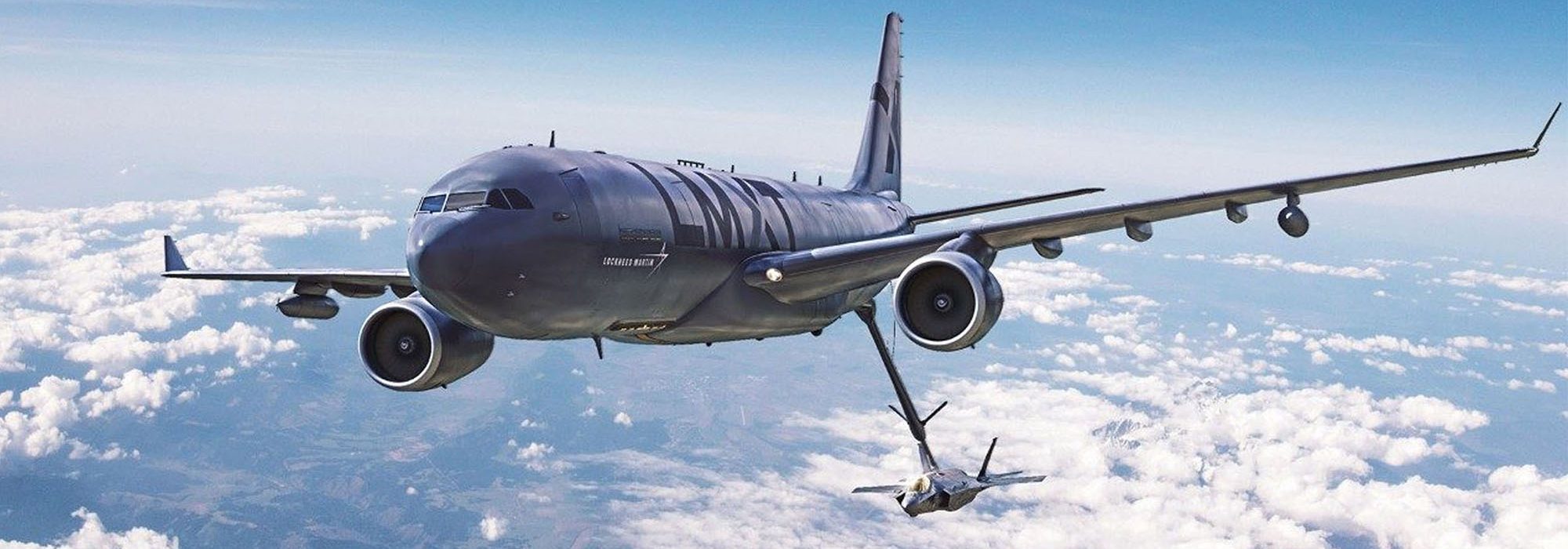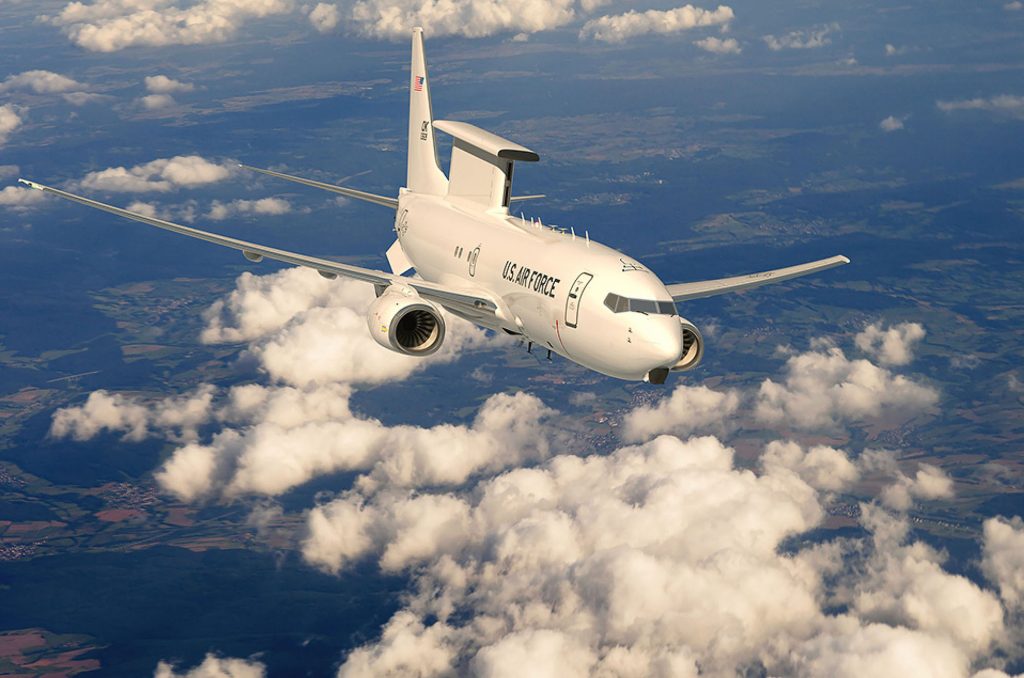KC-135 Recapitalization Requirements
By John A. Tirpak
DAYTON, Ohio
What is now officially known as the KC-135 Tanker Recapitalization Program—formerly called KC-Y or the “bridge tanker”—should clear the Pentagon’s joint requirements process by the end of September, at which time the Air Force will issue a Request for Information (RFI) to industry for potential solutions, Scott Boyd, USAF’s deputy program manager for mobility aircraft, told reporters July 31.
The Air Force will complete an acquisition strategy for the KC-135 recap tanker in the third quarter of fiscal 2024, based on an analysis of alternatives that will also launch this fall.
Boyd said the service is not yet ready to discuss the timing and exact number of aircraft in the program, which will depend on the success and timing of the Next Generation Air-refueling System, or NGAS, which will come after it.
The KC-135 recap effort should clear the Joint Capabilities Integration and Development System (JCIDS) process next month, after which the RFI will be published, Boyd said during Air Force Materiel Command’s annual Life Cycle Industry Days conference.
“As soon as I get a systems requirement document,” the program will get underway, Boyd said. It will be the first official requirements statement for the program and will translate the requirements “into the language of industry,” he said. No additional time will be needed to write the RFI because the Air Force already has all the information that went into the requirements and no changes are expected, he pointed out. Responses to the RFI would be due next year.
Boyd said no particular airplane has been ruled in or out. Senior Air Force leaders have said they are leaning toward buying more KC-46s from Boeing, but Boyd said the Air Force still has time to do “market research.”
Lockheed Martin is offering a tanker based on the Airbus A330 Multi-Role Tanker Transport, dubbed LMXT, and company officials have argued NGAS will likely not be ready by 2035, the Air Force’s target date.
When NGAS enters the fleet will affect how many tankers the Air Force buys under the KC-135 recap program.
Air Force Secretary Frank Kendall says the service needs to get the NGAS as soon as possible. The original plan called for the future tanker—expected to be small, stealthy, and capable of accompanying combat aircraft in contested airspace—around 2040, but Kendall has said, ‘no,’ we need to go faster because it’s that NGAS capability … that scares China,” Boyd said.
Air Force acquisition executive Andrew Hunter said in March he thinks the KC-135 recap will consist of around 75 airplanes, half of the prior estimate. Lockheed officials, doubt the faster NGAS timeline, anticipating a need for more than 75.
Lawmakers from states where Lockheed would assemble its LMXT offering have tried to mandate competition through legislation.
Despite all this, “I’ve honestly not felt pressure from Congress or from within the Air Force to do anything different than what we were already doing,” Boyd said.
Boyd offered little indication about forthcoming requirements. He said the JCIDS document for the recapitalization program will not include anything “revolutionary” and could “potentially be satisfied” by continued buys of KC-46s.
Nonetheless, he also noted the document “is not going to declare that we cannot create a new logistics” tail for the airplane to be acquired—which LMXT would require, because there is no similar airplane in USAF’s inventory.
“It may speak to sustainability of the weapon system in ways that tell you that I probably don’t want to create a new [logistics and support train], but it’s not going to be clear that you can’t,” Boyd said. “It’s going to come down [to] … the business-case analysis that we’re doing, and the final market research that we do to decide what is the best value approach for the Air Force. And that’ll be our recommendation.”
There will also be lessons learned from the KC-46’s troubled development—Boeing agreed to a fixed-price development and production program on the KC-46, but so far has borne more than $7 billion in overages on the project, noted Col. Leigh Ottati, chief of the KC-46 program office.
“Everyone needs to understand” the scope of a program like a new tanker, Ottati said. The KC-46, originally thought to be a simple conversion of a cargo jet into a tanker, turned out to be “more development than everyone thought,” and Boyd said that lesson will be front of mind as the Air Force pursues the KC-135 recap and NGAS.
Industry and government need to both understand “the scope of what’s being asked,” Boyd indicated.
USAF Wants to Complete E-7 Fleet Faster
By Greg Hadley
Neither intense interest nor extra funding can move up the 2027 date when the Air Force takes possession of its first E-7 Wedgetail. But USAF acquisition officials said July 31 that actions taken now could help them acquire the 26-plane fleet more quickly.
“There’s a lot of fixation on how fast we can produce the first one,” Steven Wert, program executive officer for the digital directorate, said at the Life Cycle Industry Days conference. “[But] there are limitations to that. Boeing has to build a green aircraft and then they have to convert it to a configuration that can support the radar, and then the mission systems, and then you have to test and certify airworthiness and those things. There’s only so fast you can do the first one.”
How fast the Air Force can get the rest of its new E-7s, however, has been a topic of intense interest since USAF announced its decision to replace its aging E-3 airborne early warning and control aircraft with the Wedgetail.
Acquiring planes faster is still possible, said Thomas Ramsey, airborne warning and control system (AWACS) division chief.
“The rapid prototyping, the first two, we’re going as fast as we can,” he noted. “The way to fill the fleet faster is to do it through production. Advanced procurement of the 737, the radar, the reinforced section will let us jump-start each block buy by a year. So there’s definitely benefit there. And then the other way to go faster is to buy more per year.”
The Air Force fiscal 2024 budget request did not include that advanced procurement, but USAF did list a $600 million requirement on its unfunded priorities list for Congress. The funds would pay for long-lead items and help Northrop Grumman ramp up production capacity for the Wedgetail’s Multi-Role Electronically Scanned Array (MESA) radar.
Congress seems split on the matter. The House version of the 2024 National Defense Authorization bill included half that amount, $300 million; the Senate version includes none.
Air Force Secretary Frank Kendall told lawmakers in 2022 “there are things that we could do … to maybe get access to aircraft earlier one way or another.” Just how was never clear.
Australia has six E-7s in operation, and the United Kingdom is in the process of buying three. At last year’s Life Cycle Industry Days conference, Wert suggested that “we see tremendous opportunities to accelerate test and evaluation, given that we’re buying a system very similar to the U.K. E-7. Much of the testing can actually be done on a U.K. E-7.”
The U.S., British, and Australian air chiefs signed a “joint vision statement” in July, pledging to work together to develop and deploy the E-7 Wedgetail, and noting a collective desire to “accelerate E-7 capability delivery.”
But that deal is mostly focused on long-term enhancements, not short-term deliveries, Wert said.
“The intent of that statement is looking to the future,” he said. “We expect, for example, Australia to leverage the work we’re doing on open mission systems on our rapid prototyping aircraft. So it’s looking at the future of modernization across the three fleets and how we can work together to leverage each other’s investments or even a coordinated program at some point.”
The urgency of the need to replace the E-3 AWACS fleet is no secret. The age and deterioration of the U.S. AWACS fleet makes the old Boeing 707-based aircraft hard to maintain.
But while simply acquiring new E-7s into service as quickly as possible remains the top priority, Air Materiel Command is also keeping an eye on future enhancements. “I believe some of their future requirements will be things like even more improved radar, which some level of development funding Australia has already, … but it would need to be further developed.”
Ramsey said communications enhancements are also likely. “Every battle management platform will always need more advanced communications—bigger pipes and more bandwidth and more radios to get information on and off,” he said.

